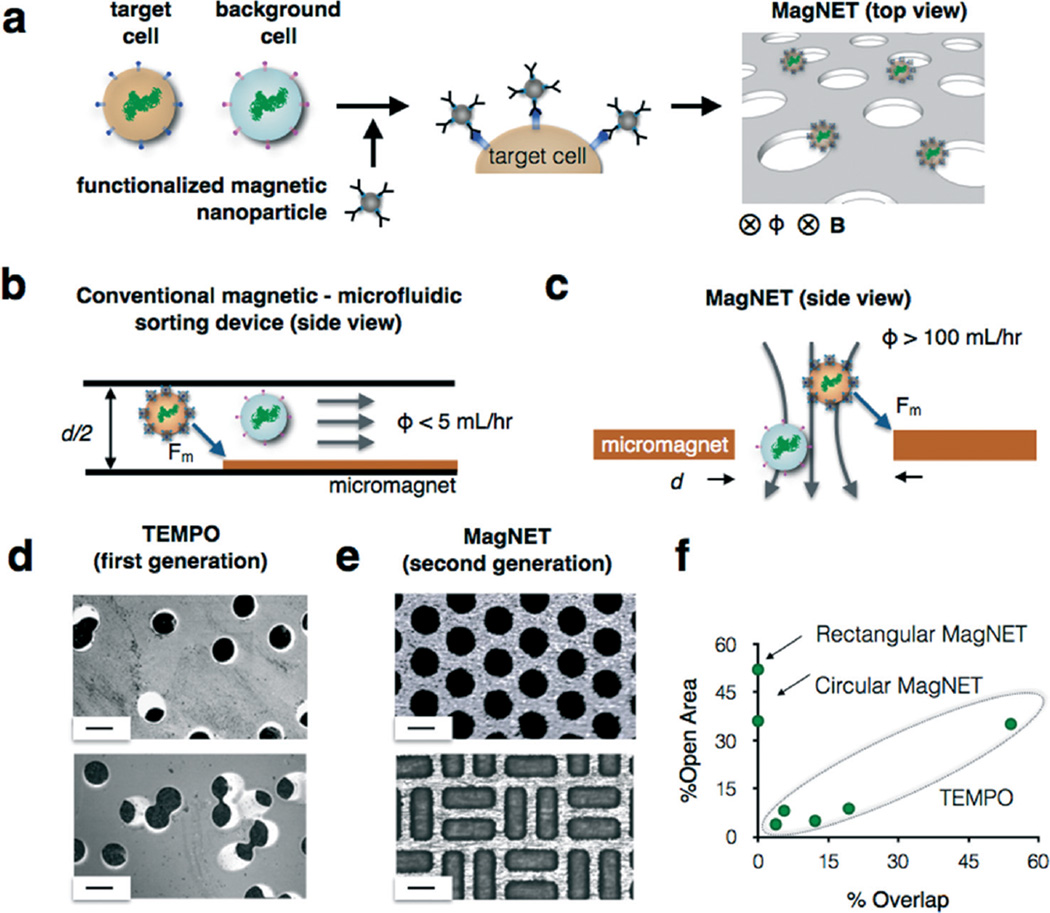Fig. 1.
High throughput immunomagnetic sorting with the magnetic nickel iron electroformed trap (MagNET). a. MagNET uses magnetophoretic traps to isolate cells specifically targeted with functionalized magnetic nanoparticles. This design enables high flow rates by having millions of micromagnetic traps operate in parallel. b. MagNET rotates the conventional microfluidic geometry by 90° to form magnetic traps at the edges of pores (c) instead of in microfluidic channels. d. Micrographs of Track Etched Magnetic microPOre (TEMPO) devices. In this approach as the density of micropores is increased so did the number of overlapped pores, which limited performance. Scale bar 30 µm. e. Micrographs of MagNET devices. In this approach density and the shape of the micropores could be tailored to maximize performance. Scale bar 30 µm. f. A graph summarizing the trade-off relationship between % open area and % overlap for both TEMPO and MagNET.

